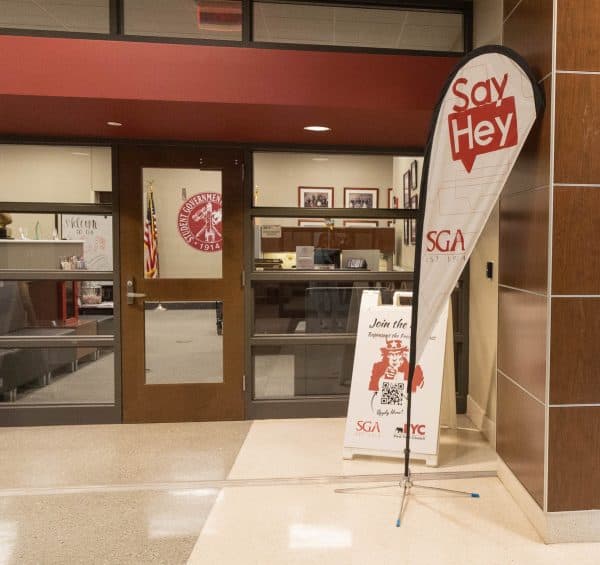University addresses lack of faculty diversity
January 31, 2019
The lack of diversity among postsecondary faculty is a complex national issue that The University of Alabama is actively working to combat within the institution.
According to the National Center for Education Statistics, in 2016, the percentage of full-time minority professors in postsecondary institutions was 24 percent, compared to the 76 percent who were white.
A report from Fall 2017 showed the University had 20.07 percent of minority faculty. The University is working toward increasing that percentage by dialoguing amongst departments about how they can promote diversity within the faculty.
“I think [faculty diversity] is a very active conversation,” said Utz McKnight, chair of the Department of Gender and Race Studies and professor of political science. “There are not only formal groups that meet to talk about it, but also a lot of informal conversations.”
G. Christine Taylor, vice president and associate provost for diversity, equity, and inclusion, said both faculty and administrators are concerned about how the University can make its faculty more diverse.
Taylor said after studying ways to effectively recruit faculty of color, she found it requires conducting research to know who’s out there, becoming more engaged and taking a more intentional approach, rather than saying, “We posted a job.”
The process of becoming a UA faculty member begins with a pool of applicants. So to increase faculty diversity, an approach the University takes is creating a more diverse pool.
Taylor said when a pool is built for a search, specifics to take into account include knowing how many diverse people are in it and asking, “Were all resources used to at least get people to apply?”
“Higher education is a small group of people, and the number of diverse people in higher education is even smaller,” Taylor said. “Lots of people know lots of people. It’s networking. We’ve got to do a great job networking and making sure we know who the up-and-coming people are.”
Taylor said if the applicant pool is not diverse, there is no way she will end up with diverse candidates.
“So there’s many steps to this process, and the ability to get people in the pool probably has something to do with the history of the institution, the research profile and the relationships that had a chance to be built,” she said.
Taylor said her experience combined with her research reveals that relationship-building is vital for launching more sustained bonds, whether with enrollment or employment.
McKnight said something the University could implement institutionally is a constant effort to foster an environment in all departments that is congenial and positive toward faculty, which can help with recruitment and employee retention.
In addition to building relationships, McKnight said possibly creating more incentives in terms of the type of resources we put toward faculty members, such as helping them get what they need in order to do their research, could also be useful.
“The University of Alabama cares a lot about recruiting and retaining faculty members of color,” McKnight said. “They can say, ‘If you come, we will take good care of you.’”
McKnight said a viable way to create more diversity in the faculty would be to invest in minority students at the undergraduate level.
“The problem is, at the graduate level, there’s not enough production,” McKnight said. “So one of the things you could do on the campus is put more resources from central administration and elsewhere to the undergraduate programs. Because we have 23 percent minority students at the undergraduate level, we could potentially produce a large pool of master’s and Ph.D. students.”
Nationally, many minority students aren’t pursuing doctorate degrees. According to the National Center for Education Statistics, during the 2014-2015 academic year, only 30 percent of minority students received doctorates, which then leads to a lower number of diverse candidates.
McKnight said a lack of representation of minorities in faculty could negatively affect the number of minority students who pursue doctorates because it can create an expectation and idealization of what a faculty member is.
However, Cameron Watts, a freshman majoring in computer science, said he doesn’t notice the lack of diversity among faculty, and the education he receives is what matters.
“I don’t really pay attention to it,” Watts said. “It’s a good education so I’m straight with it.”
Bruce King, a freshman majoring in nursing, said he doesn’t mind the lack of diversity among faculty as long as students are being taught appropriately.
“I mean, I don’t really think of it as nothing as long as they’re not racist, and as long as they are teaching us the right way, it’s fine,” King said.
McKnight said department chairs and faculty members encourage minority students who question if they, too, can become a member of the faculty because an important thing for faculty is reproducing more minority faculty members.
“And another question is, ‘What is the disciplines in which they are getting these degrees?’” Taylor said. “Many times you may find a disproportionate number of African Americans in education or maybe arts and sciences related fields, but that also makes a difference in who’s in the pipeline to get hired.”
Though diversifying the University’s faculty is a strenuous process, the University is trying to find new ways to do it. Taylor said she and faculty members, depending on if it’s a recruiting event, annually go to conferences like the Institute on Teaching and Mentoring and the McKnight Doctoral Fellowship.
“Every opportunity there is for recruitment of diverse scholars, we make it our business to have someone from the University there who are representing us and talking about our campus and why it’ll be a good place to go,” she said. “We aren’t just sitting around. We are doing some things. There are a lot of pieces to consider here, and you can’t do it just like that in the same way you cannot overnight turn over your student body either.”
Currently, two major programs for recruiting are underway at the University. One launches this spring on an ongoing basis as a part of professional development, which will be workshops that focus on how to be more inclusive in the recruitment process. The other will be a committee that will focus on how the University might implement best practices beyond the preparing of a valid search process, and it will focus on what other things the University could do in some programs that have been successful on other campuses.
“Everybody can do better,” Taylor said. “I don’t care what you’re doing, but I do think it is so very important for people to know what’s involved in that process and how one makes it happen.”











